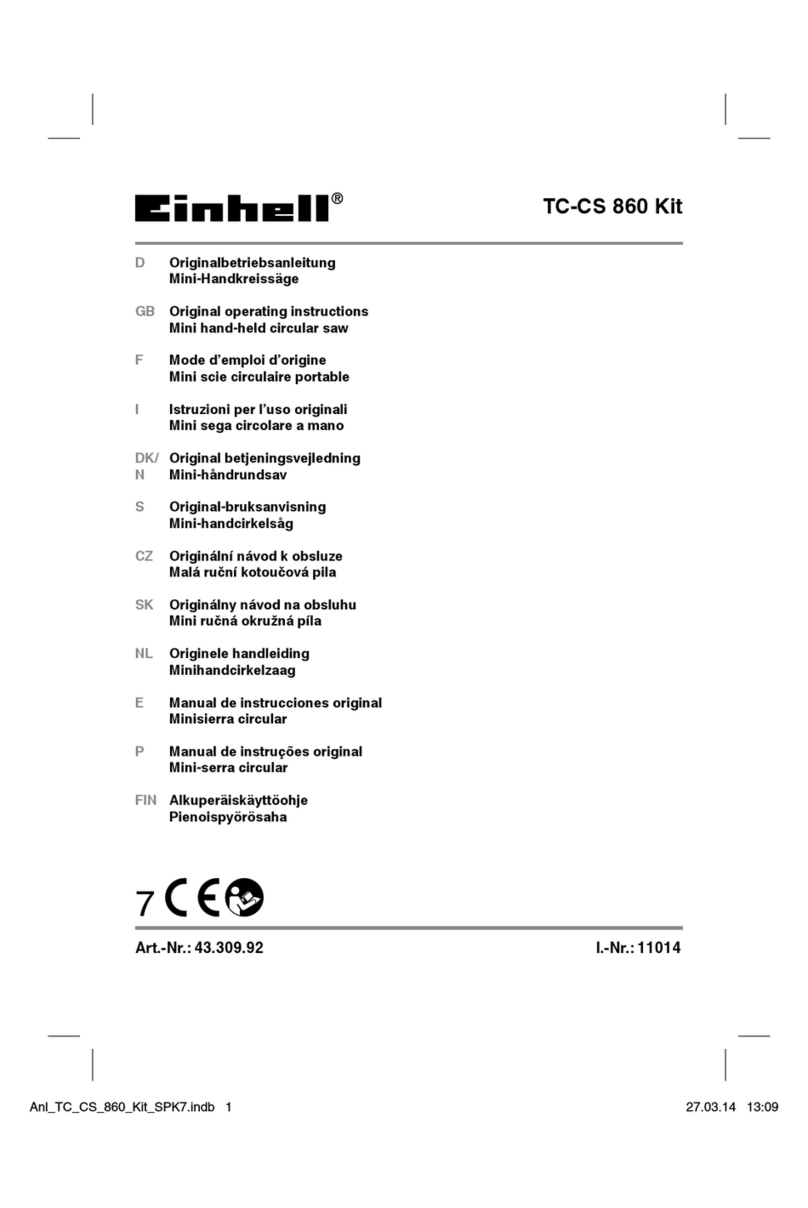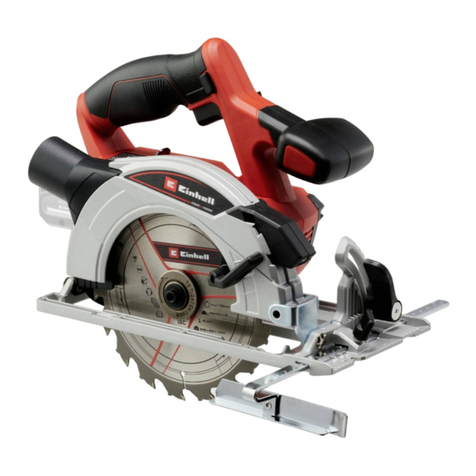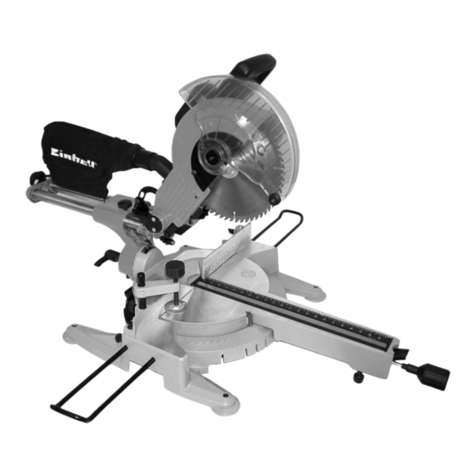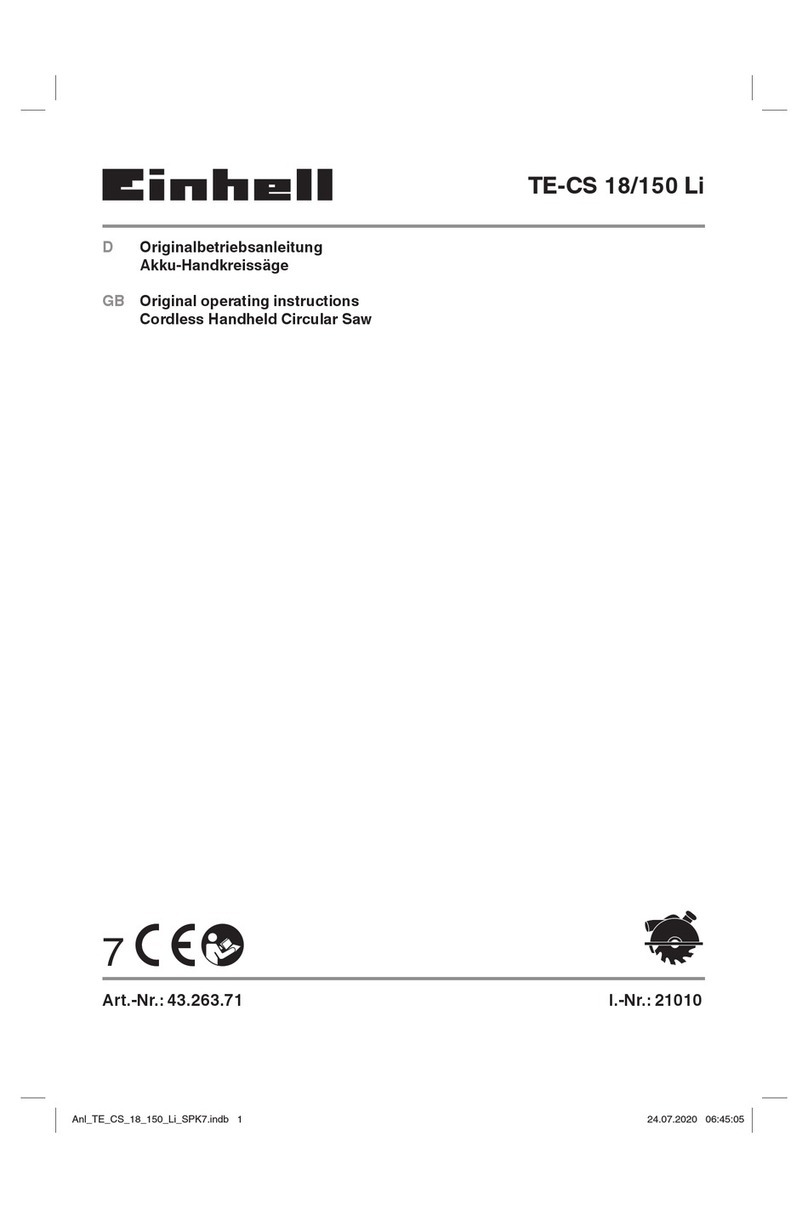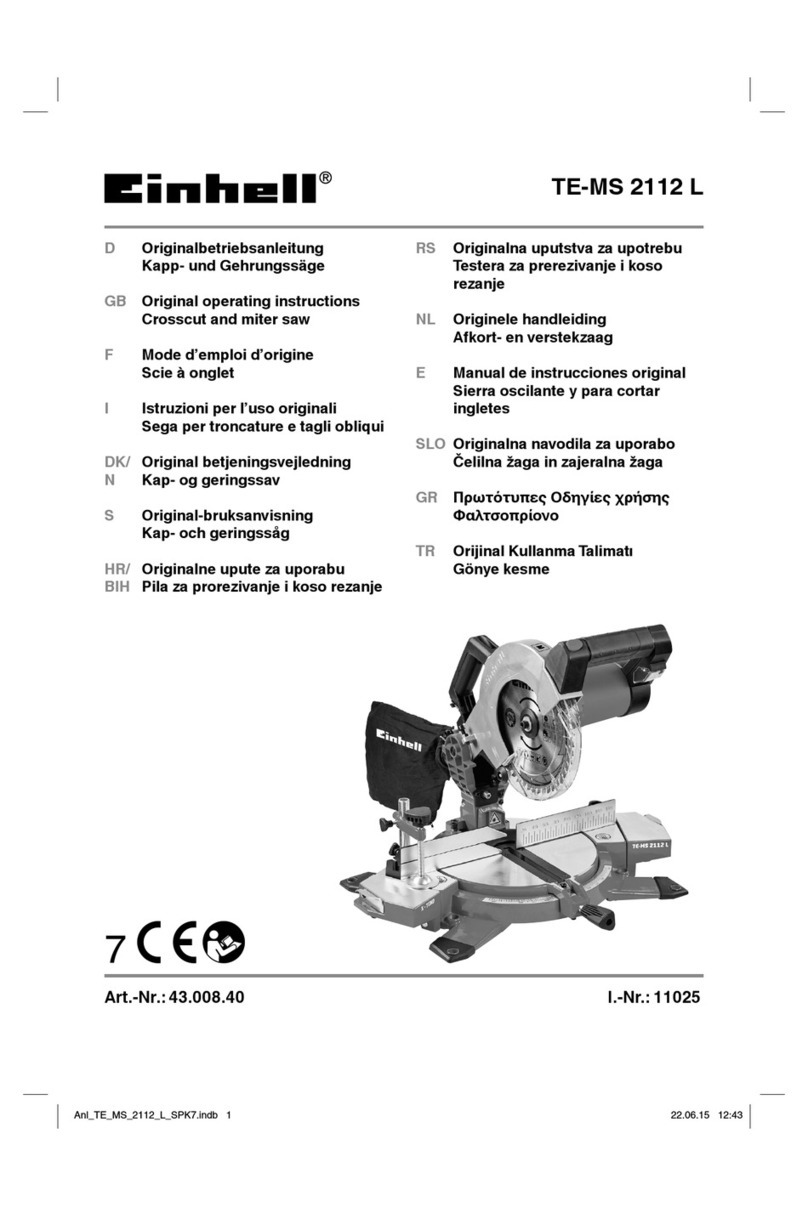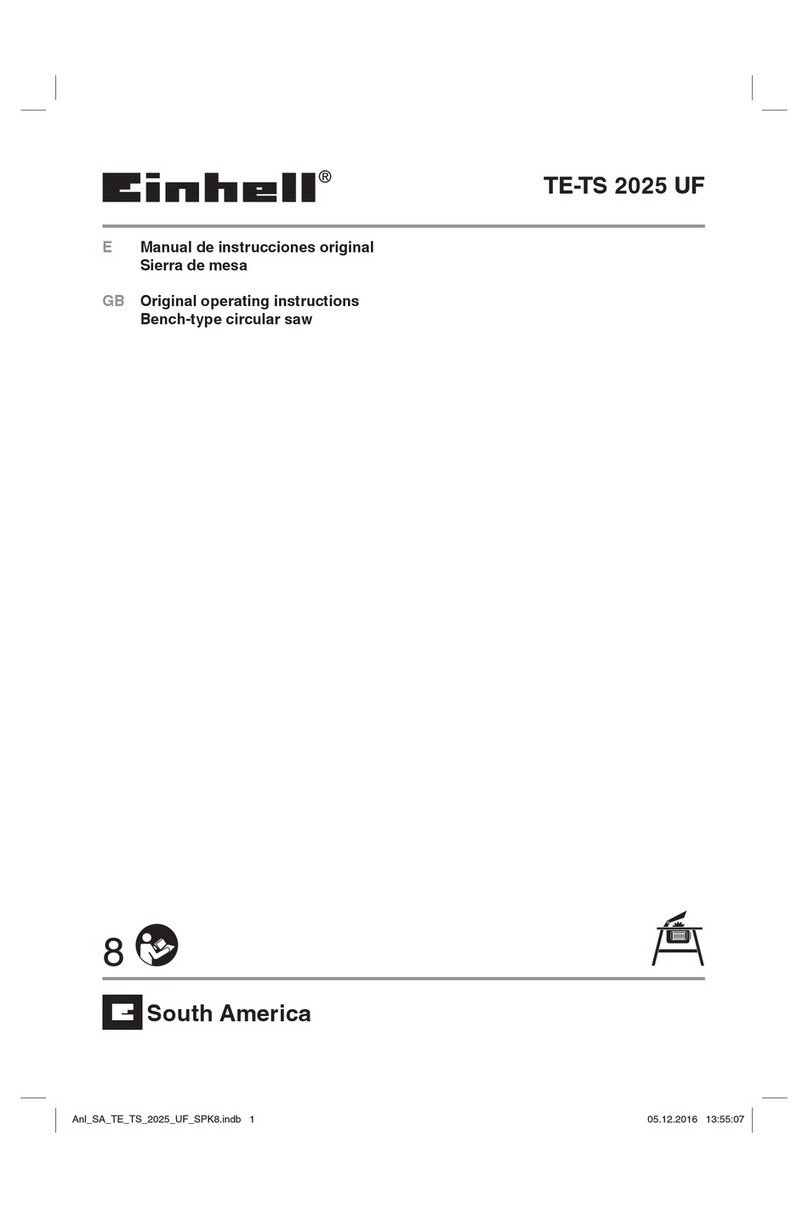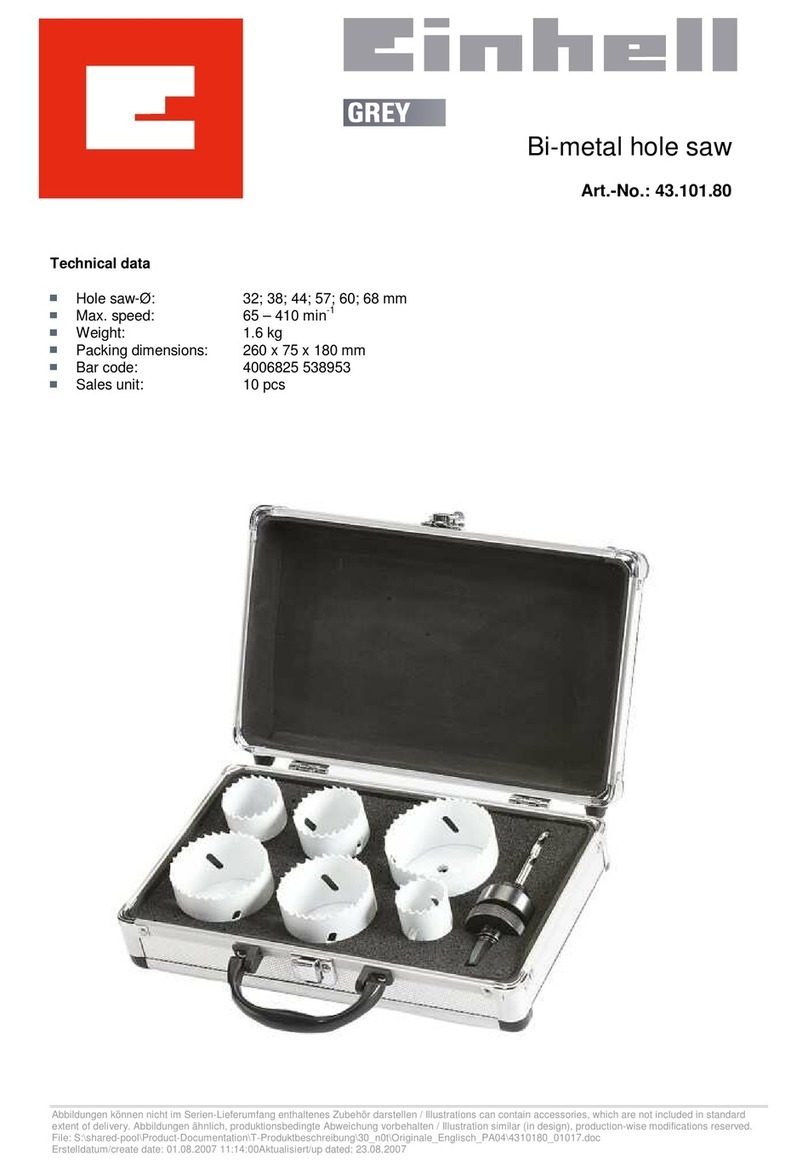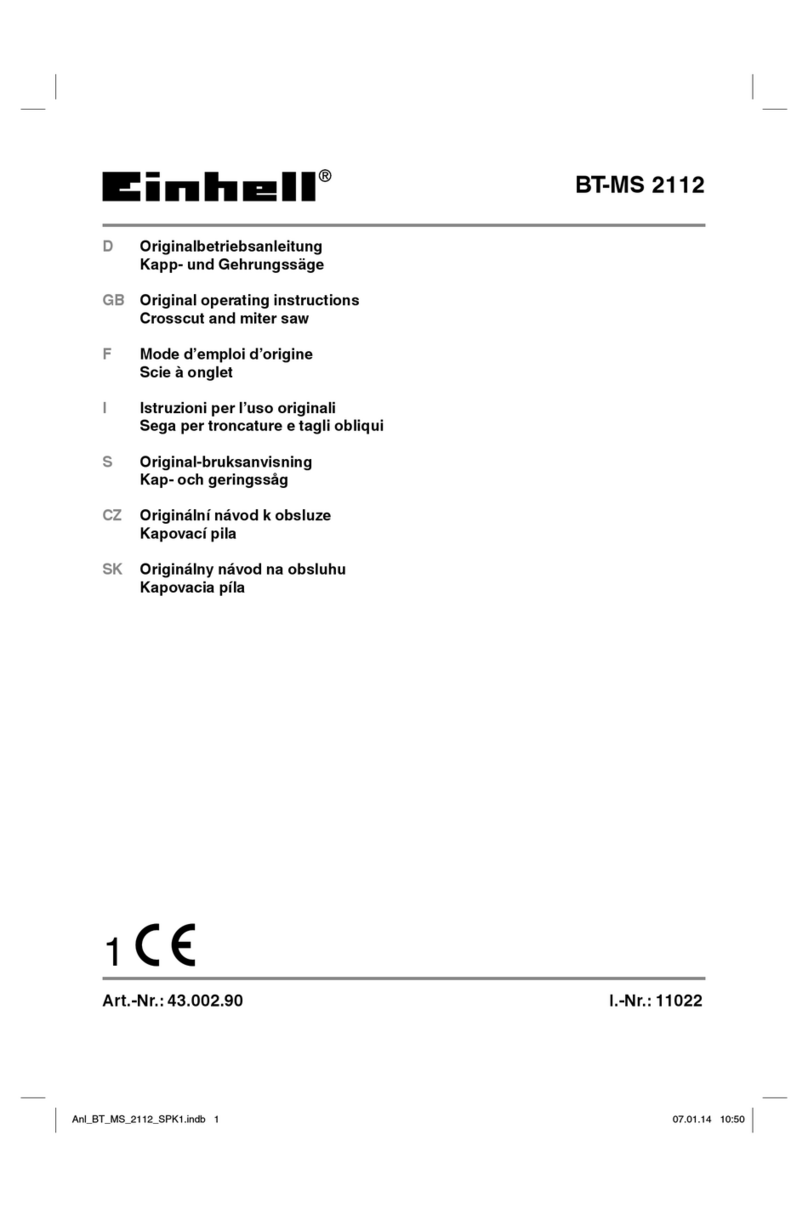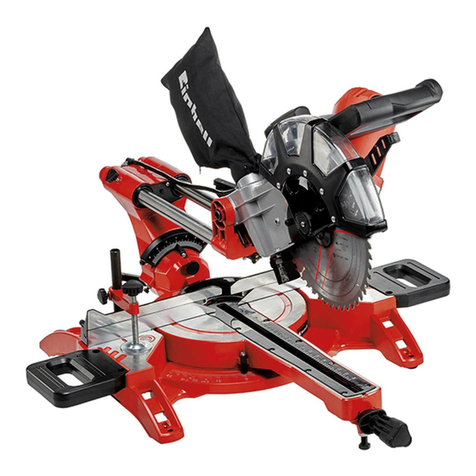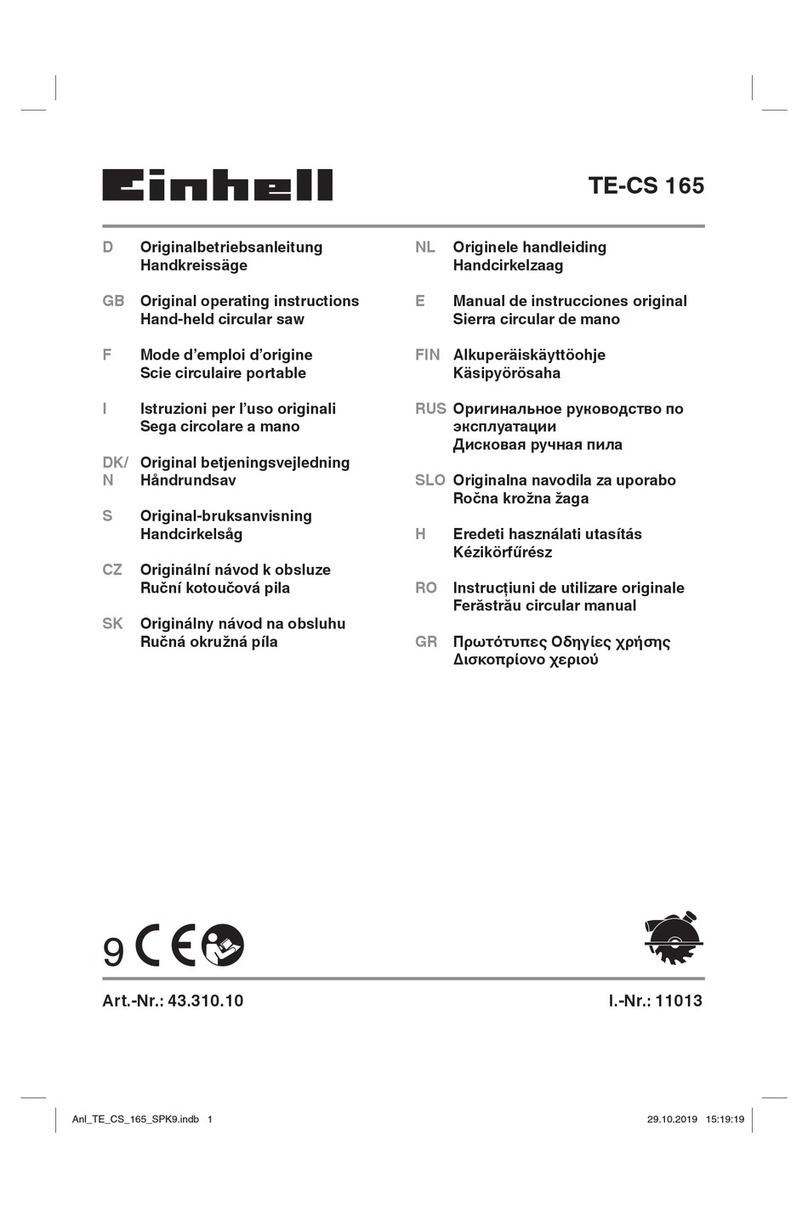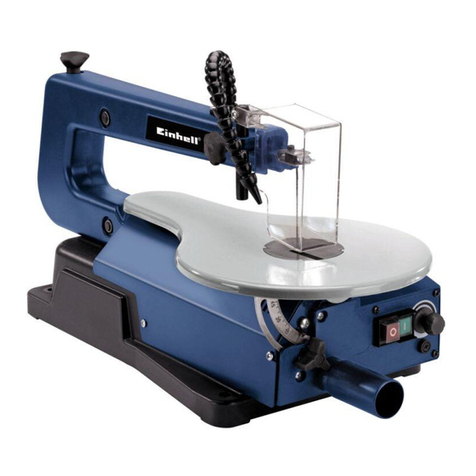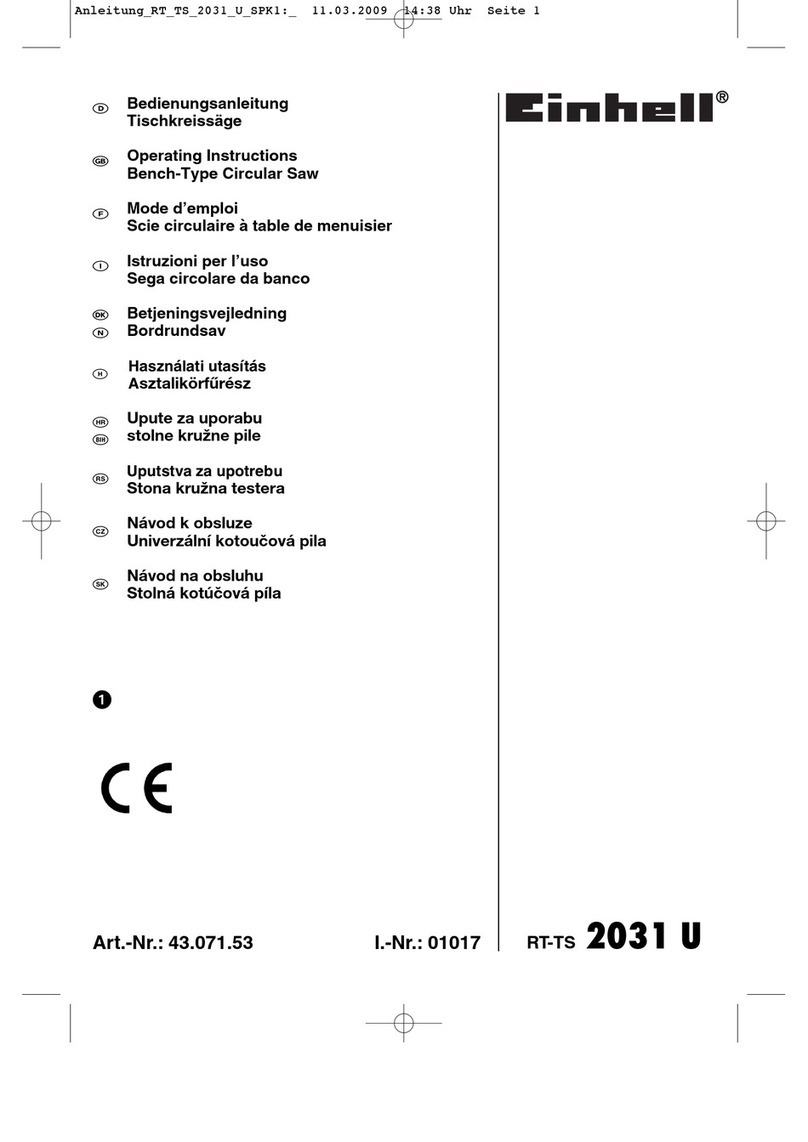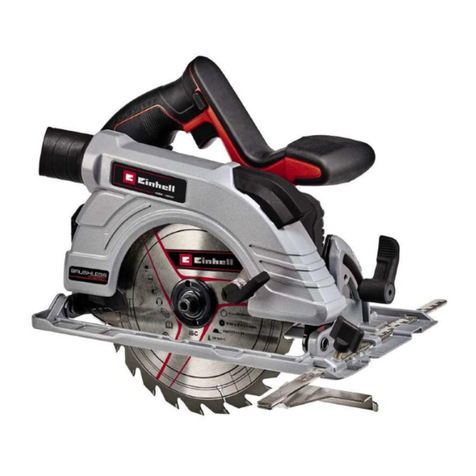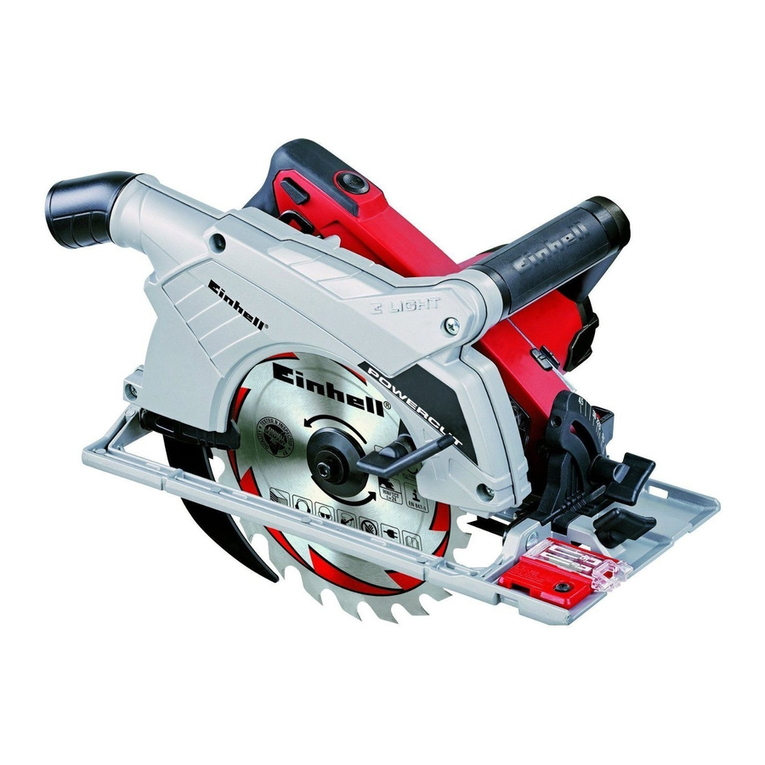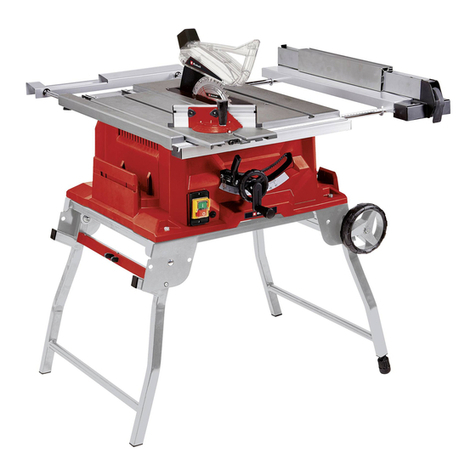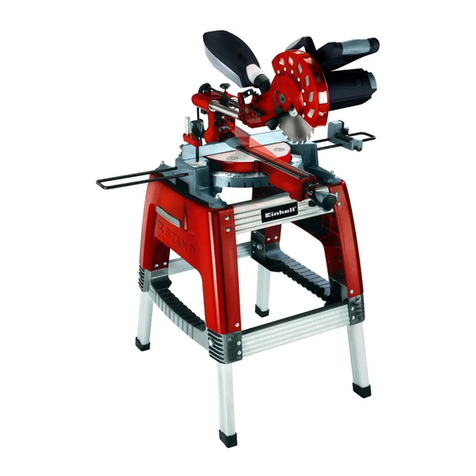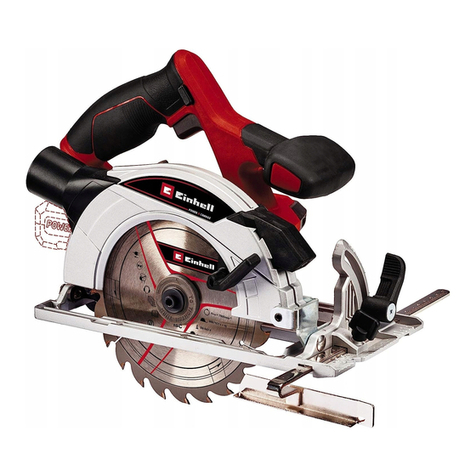12
GB
Handle
Vibration emission value ah= 2.73 m/s2
K uncertainty = 1.5 m/s2
Additional handle
Vibration emission value ah≤ 2.5 m/s2
K uncertainty = 1.5 m/s2
Important!
The vibration value changes according to the area of
application of the electric tool and may exceed the
specified value in exceptional circumstances.
5. Before starting the equipment
Before you connect the equipment to the mains
supply make sure that the data on the rating plate are
identical to the mains data.
Always pull the power plug before making
adjustments to the equipment.
5.1 Setting the cutting depth (Figure 2/3)
앬Release the handle on the rear of the guard hood
for adjusting the cutting depth (4).
앬Place the saw foot (6) flat on the surface of the
workpiece you wish to saw. Raise the saw until
the saw blade (12) is at the required cutting depth
(a).
앬Refasten the handle for adjusting the cutting
depth (4). Check the handle is securely fastened.
5.2 Miter stop (Figure 4/5)
앬The preset standard angle between the saw foot
(6) and saw blade (12) is 90°. You can adjust this
angle to carry out angled cuts.
앬Release the locking lever for miter setting (7) on
the front of the saw foot.
앬You can now adjust the cutting angle to around
45°. Keep an eye on the cutting angle scale (9) as
you do so.
앬Refasten the locking lever for miter setting (7).
Check the handle is securely fastened.
5.3 Extraction of dust and chips (Figure 6/7)
앬Connect your circular saw to a suitable vacuum
cleaner with the dust extractor adaptor (11) Then
fit the dust extraction adaptor (11) into the
intended sawdust extraction outlet (14) on the
hand-held circular saw. You can then connect a
suitable vacuum cleaner (a) to the dust extractor
adaptor (11) (vacuum cleaner not supplied). This
will provide excellent dust extraction on the
workpiece. The benefits are that you will protect
both the equipment and your own health. Your
work area will also be cleaner and safer.
앬Dust created when working may be dangerous.
Refer to the section entitled “Safety instructions”.
앬Important! The vacuum cleaner you use for the
extraction work must be suitable for the
workpiece material.
앬Check that all the parts are properly connected.
5.4 Parallel stop (Figure 8/9)
앬The parallel stop (16) enables you to saw parallel
lines.
앬Loosen the locking screw for the parallel stop (8)
on the saw foot (6).
앬To assemble, slide the parallel stop (16) into the
guide (a) on the saw foot (6) (see Figure 8)
앬Set the required spacing and then tighten the
locking screw (8) again.
앬Using the parallel stop: Position the parallel stop
(16) flat on the edge of the workpiece and start
the cut.
Important! Carry out a trial cut in a piece of
waste wood
6. Operation
6.1 Working with the hand-held circular saw
앬Always hold the circular saw firmly.
앬The swing guard hood (19) is pushed back
automatically by the workpiece.
앬Do not use force!
Push forwards gently and evenly with the circular
saw.
앬The waste piece should be on the right-hand side
of the circular saw so that the wide section of the
support bench supports its full area.
앬If you are sawing down a line that has been
drawn, guide the circular saw along the
corresponding notch.
앬Clamp small pieces of wood securely before
sawing them. Never hold them with your hand.
앬Always follow the safety instructions. Wear safety
goggles.
앬Do not use defective saw blades or blades that
are cracked or broken.
앬Do not use any flanges / flange nuts whose bore
hole is larger or smaller than those in the saw
blade.
앬The saw blade must not be decelerated by hand
or by applying lateral pressure to the blade.
앬The swing guard hood must not jam and must
return to its initial position after the operation has
